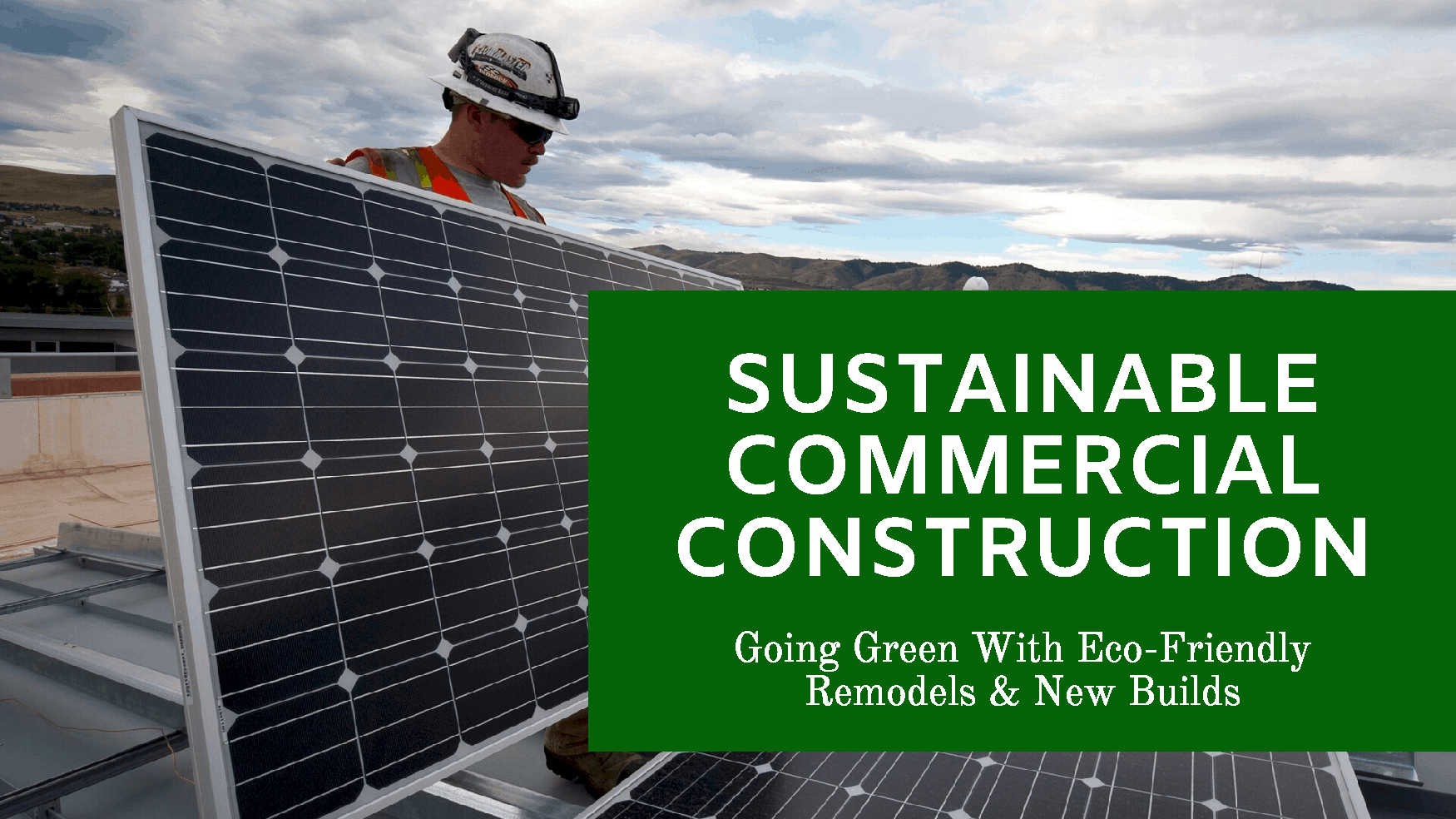
What it Means to Go “Green” and Why It’s Important
Learning more about sustainable construction is perfect for green-curious entrepreneurs/ business owners, brokers that have clients with sustainable needs, property managers that want to project their firm as environmentally friendly, and contractors with green-savvy customers.
Essentially, sustainability is about controlling natural resource consumption, preventing pollution, and limiting waste. A sustainable remodel or new build can save your business money, attract local patrons who want to support a green business, and help protect the environment in your community. Wouldn’t it be great if your business could save money by lowering fossil fuel consumption, decreasing waste that ends up in landfills, and reducing maintenance costs?

Construction Sustainability Statistics
- By 2025, construction waste generated each year is expected to double to 2.2 billion tons (Fieldwire)
- Concrete comprises 50% of all construction waste generated each year(Fieldwire)
- From 2016-2018 56% of contractors registered their projects with the U.S. Green Building Council (USBGC) or Leadership in Energy and Environmental Design (LEED) (USCC).
- As of 2018, 4 out of 5 contractors cite that their U.S. customers request energy efficient materials (USCC).
Commit to Sustainability from the Get-Go
Sustainability starts in the design phase. Architects and engineers can help to incorporate energy efficiency by designing the optimal placement of windows, walls and floors. Moreover, including elements such as waterless urinals and touchless fixtures can reduce water waste, while other design strategies, such as using reflective roofing, may help to save energy.

The Building Blocks of Green Construction
Examples of eco-friendly materials include renewable or easily replenishable resources like recycled steel, reclaimed wood, cork, bamboo, sheep wool, hempcrete, and ferrock. Insulated concrete forms, local stone/granite, green walls, green roofing, energy star appliances, upgraded HVAC, CFL or LED lighting, solar panels, and low-flow/smart fixtures are other environmentally-friendly solutions that help increase sustainability of commercial buildings.
Eco-Friendly Technological Advances
Minimizing a commercial building’s impact on the environment is now more feasible than ever, and will continue to become easier due to advances in green building materials and renewable energy systems. Plant-based polyurethane foam, for example, is less harmful to the environment that other forms of insulation. Architectural films, which are commonly applied to windows, are another sustainable solution– they help with temperature maintenance, energy savings, and more. Solar panels are a great example of clean and cost-effective energy. Other novel green solutions, such as botanical air filters that reduce carbon dioxide and contaminants, can improve air quality and save a significant amount of HVAC energy.

Consider Green Certifying Your Commercial Space
Firstly, it’s important to check if your municipality has added green requirements to its building rules, because many have. Apart from government mandated codes, Energy Star and LEED are the voluntary rating systems most commonly applied and recognized in the context of commercial construction. They were developed with the goal of measuring and certifying that buildings adhere to environmental performance standards. Many such green building certification systems require environmental responsibility throughout the whole construction life-cycle, from site selection, to design, construction, operation, maintenance, renovation, and demolition (Vierra, 2019).
Although, with so many building products marketed as “green” (from windows and doors, to paint, carpet, and skylights) it’s important to follow certification guidelines and to use options that have a verifiable “sustainable” rating based on life-cycle parameters. In order to achieve green certification, sustainable building strategies are used across diverse projects projects ranging from office buildings to hospitals, schools, and stadiums. Ultimately, however, a building doesn’t have to be green certified to be sustainable.

Environmentally Friendly Construction is an Investment in Your Business’s Future
In the end, sustainability doesn’t have to be ground-breaking or a huge financial burden– companies can do their part by incrementally changing their fixtures, materials, and processes. The first step is making the commitment to help save the environment. Whether you want to make a green upgrade or to simply implement some sustainable solutions into your new commercial build or remodel, let us help you with eco-friendly construction today. Call 480-832-9808 or email us at info@emeraldinc.biz
Sources
https://www.wbdg.org/resources/green-building-standards-and-certification-systems
https://greenbuildinginsider.com/300/4-ways-to-make-commercial-buildings-sustainable
